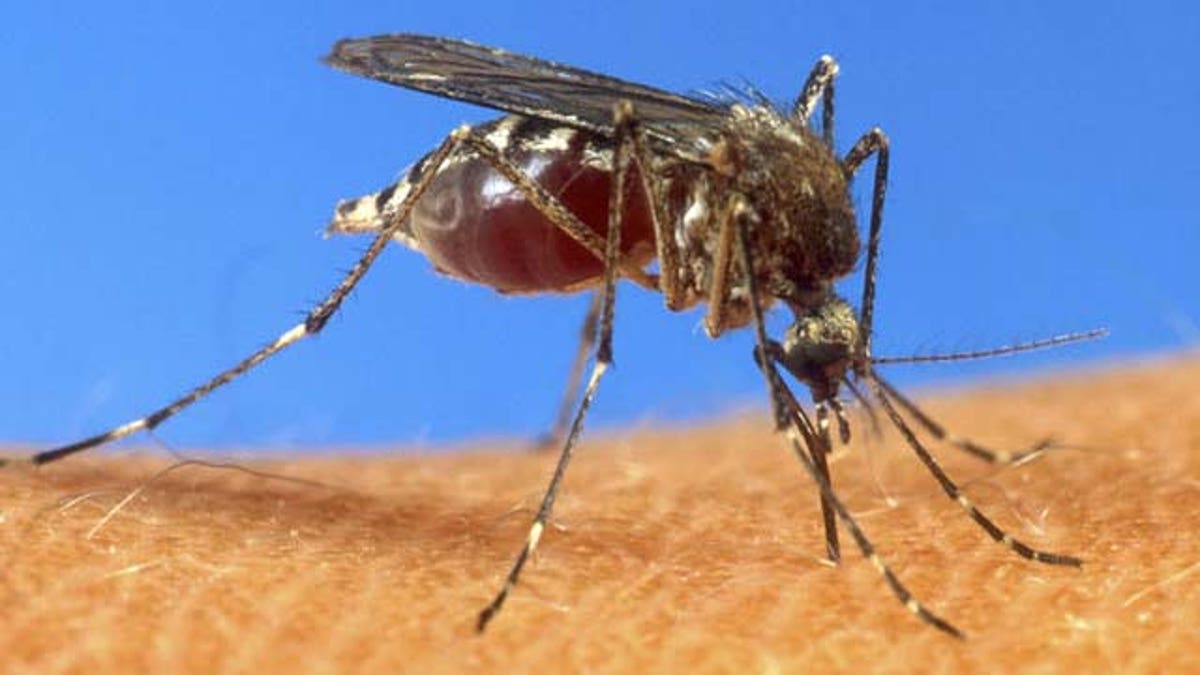Your biggest bug questions, answered
{{#rendered}} {{/rendered}}
(AP)
Consider these solutions when dealing with those pesky pests.
Do fair-skinned people really get bitten by mosquitoes more often?
No. And neither do women nor redheads nor any other specific group. Part of what attracts mosquitoes is the amount of carbon dioxide, heat, and moisture that a person emits. Unfortunately, those factors are determined by genetics, and they’re hard to measure. The one phenomenon that scientists have noticed is that “the more you sweat, the more attractive you can become to mosquitoes,” says James E. Cilek, professor of entomology at Florida A & M University, in Panama City. But they are not sure why. Whether this has to do with the scent or the moisture in perspiration isn’t clear.
_______________________________________________
More From Real Simple:
{{#rendered}} {{/rendered}}Easy Medicine-Cabinet Makeover
First-Aid for Common Injuries
______________________________________________
How can I uninvite bugs from an outdoor summer party?
Avoid scheduling your event at dusk, when mosquitoes and no-see-ums are most plentiful, and cover food between trips to the buffet. Your best bet among repellents, says Cilek, is probably a yard spray. Candles containing citronella oil have been found to be effective in repelling bugs, but they deter only those that are hovering within three feet of the candle. As for electronic bug zappers, they trap only the insects that happen upon them.
{{#rendered}} {{/rendered}}How do I keep no-see-ums out of the house if they are small enough to get through door and window screens?
Give them a little air: These tiny bugs can’t survive in a breeze of more than about two miles an hour. Try using overhead fans in the house or on the porch, or manipulate the air current with a couple of strategically placed box fans.
What is the best way to deal with an itchy bite?
Keep your hands off, says Robin Ashinoff, a dermatologist at Hackensack University Medical Center, in New Jersey: “The more you scratch, the more you release histamines, chemicals that cause the itchy sensation, which makes you scratch even more.” Hydrocortisone or even an ice cube will temporarily soothe the tickle. And oral antihistamines, like Benadryl and Zyrtec, are also helpful to both kids and adults.
What exactly is DEET, and why do some people avoid it?
DEET is a highly effective chemical that confuses the receptors on the antennae of many insects, so bugs are warded off but not killed. The main concern with DEET is its possible toxicity. According to the Environmental Protection Agency, in the almost 50 years that the chemical has been used in the United States, there have been rare cases of reactions to DEET, which have ranged from skin irritation to death in those who used excessive amounts. But most experts agree that when used correctly, DEET does not pose a health risk for adults. Common sense: Don’t apply it more frequently or leave it on skin for longer than the package directions specify. And avoid using DEET around food, in small, enclosed spaces, or on open sores.
{{#rendered}} {{/rendered}}When it comes to children, the American Academy of Pediatrics recommends using a product with a maximum DEET concentration of 30 percent. (Caveat: Never use a repellent with DEET on a baby less than two months old.) “Avoid putting it around the eyes or the mouth or on the hands of small children,” says Miran J. Song, a pediatrician at the Tuba City Regional Health Care Corporation, in Arizona.
The good news is, you can choose a DEET product with a concentration to match your needs. While higher concentrations may repel bugs longer, the Centers for Disease Control and Prevention (CDC) note that products containing more than 50 percent DEET do not repel better than products containing less. If you are bothered by DEET’s unpleasant smell, look for repellents that contain the chemical alternative picaridin, which is odorless.
Are there any natural ingredients that work?
The CDC recommend two naturally derived active ingredients: oil of lemon eucalyptus and the amino acid IR3535. These are called biopesticide repellents (the chemicals DEET and picaridin are conventional repellents). Both are described as offering “reasonably long-lasting protection” against bugs.
{{#rendered}} {{/rendered}}How can I easily find out which ingredients a product contains?
For one-stop ingredient research, go to state.ceris.purdue.edu to search the National Pesticide Information Retrieval System (which is affiliated with Purdue University, in West Lafayette, Indiana). Here you’ll find information that includes a list of insect repellents that are licensed in your state, broken down by active ingredient and the type of pest that it targets.
How do I layer sunscreen and insect repellent?
Apply sunscreen, allow it to dry, then put bug spray on top. Sunscreen should be directly on the skin to increase its absorption, while bug spray should sit on the surface, since that’s where the bugs want to land, says Ashinoff. You can find two-in-ones, but if you’ll be outside for an extended time, use separate products, since sunscreen needs to be reapplied more frequently than bug spray. Keep in mind that some studies have shown that the two are not always as effective when used together.
How can I bee-proof my house and yard?
If your property seems to be a magnet for bees, the department of entomology at Texas A & M University, in College Station, Texas, suggests searching your home’s outside walls for nests, sealing any cracks in the walls or around a chimney that are larger than an eighth of an inch, and installing screens over rain spouts and large cavities in tree trunks. If you do find a hive, don’t risk the bees’ wrath. Call a professional bee-removal service or a pest-control operator. FYI, bees don’t discriminate. They are just as liable to sting your dog as they are you. And as with humans, a dog may react to a bee sting more intensely with each occurrence. So if your pet’s nose swells up after a romp in the yard, get him to a vet pronto.
